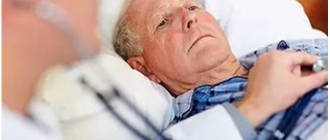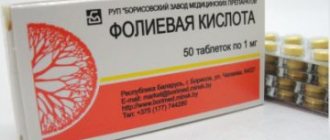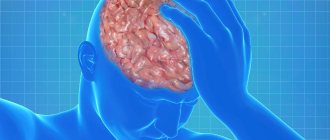An attack of VSD at night?
One of the frequent complaints to the pediatrician sounds like this: “Doctor, I constantly wake up at night from VSD. Then I can’t sleep for a long time and end up being nervous all day. What should I do?"
Indeed, an attack of VSD often occurs at night.
The patient has a terrible dream, after which he wakes up and has a panic attack.
Typically this happens between 3-4 am.
A person can experience many stressful situations in a day.
What is forbidden to do during attacks
These recommendations help relieve symptoms, but such manipulations should not replace basic treatment. Only complex therapy under the supervision of a specialist will help fight them.
During attacks, a person is strictly prohibited from:
- Do things that put the body in a state of shock. For example, extreme sports, jumping from heights in the pool.
- Practice fasting.
- Drink drinks containing caffeine.
- Engage in intense physical activity.
- View photographs, films or videos that negatively affect the psyche.
- Smoking, drinking alcohol. It should be taken into account that in many cases a hangover is a common factor that provokes a crisis.
At the same time, it is not recommended to lead a sedentary lifestyle. A person should be in the fresh air as often as possible and spend less time at the computer or in front of the TV.
The attacks usually begin around three o'clock. The patient wakes up, feels a fever, an acute lack of air, and is tormented by a severe headache, panic, and anxiety. Irregularities in the functioning of the heart and sudden jumps in blood pressure are often observed.
Attack of VSD: what to do with spasms?
Vegetative-vascular dystonia (neurocircular dysfunction) is a set of clinical manifestations, or a syndrome caused by dysfunction of the peripheral nervous system. The coherence of the sympathetic and parasympathetic parts of the nervous system is disrupted. In turn, this causes vascular dysfunction and disruptions in the functioning of internal organs.
A person experiencing an attack of VSD experiences a number of unpleasant sensations. His performance, concentration, and memory are impaired. Due to pain in the heart, difficulty breathing, darkening of the eyes, changes in pulse, a panic attack and fear of death may occur.
VSD is often asymptomatic. But for a number of reasons, neurocircular dysfunction can sharply worsen.
VSD is often asymptomatic. But for a number of reasons, neurocircular dysfunction can sharply worsen.
Other types
Most often, patients deal with the listed forms of crises. They have been studied quite well, and the symptoms leave no doubt about the diagnosis of VSD.
Separately, there are two types of attacks - cardiac and hyperventilation. Cardiac causes the most anxiety. It manifests itself only as a violation of the myocardium, and is essentially an attack of angina. The problem is that such a crisis is difficult to distinguish from angina and other heart diseases, and to differentiate from VSD.
Hyperventilation attacks occur in people with respiratory problems. They manifest themselves as a sharp lack of air, the inability to take a deep breath, and muscle cramps in the lower extremities.
Specific symptoms of a crisis depend on its type. General symptoms can be described as follows:
Main symptoms of a crisis
A person who has previously experienced an attack of VSD knows the symptoms firsthand. These manifestations may differ depending on which organs suffer more from disorders in the autonomic system.
Click to enlarge
Common symptoms include the following:
- sudden panic;
- feeling that there is critically little air in the room;
- the appearance of cold sweat covering the entire body;
- acceleration of heartbeat;
- a feeling that tiny needles are tingling your arms and legs;
- sudden changes in blood pressure from high to low and back;
- loss of consciousness;
- a feeling of complete weakness, which even sleep does not help get rid of;
- a constant feeling of anxiety, which is not possible to cope with on your own.
An exacerbation of the VSD crisis can occur with pain in the left side of the sternum if the dystonia occurs of the cardiac type. To distinguish such an attack from a heart attack, you just need to calm down - the pain should subside, if the problems are not in the central nervous system, but in the heart, then it will not be possible to stop the condition without medications.
Click to enlarge
Another characteristic symptom of a crisis is pain in the head, which tends to disappear and then appear again several times during the day. The basic rules for distinguishing pain in dystonia from other pathologies emphasize the presence of:
- profuse sweating;
- redness of the whites of the eyes;
- feelings of heaviness in the eyelids;
- flow of tears;
- soreness in the upper eyelids.
According to another classification, the following types of dystonia are distinguished:
Vegetative paroxysms
Autonomic paroxysms (crises) are special neurological conditions characterized by paroxysmal occurrence of emotional, cognitive, and behavioral disorders.
As a rule, the disease develops against the background of exacerbation of chronic pathologies of internal organs.
Paroxysmal conditions are more often observed in patients 20-40 years old; they appear abruptly and disappear just as quickly, but they tend to recur and require mandatory consultation with a neurologist.
Autonomic paroxysms: issues of pathogenesis, diagnosis and treatment
Odinak M.M., Mikhailenko A.A., Shustov E.B., Ivanov Yu.S., Semin G.F., Kotelnikov S.A., Kovalenko A.P.
The article outlines the etiology and pathogenesis of vegetative paroxysms based on a thorough analysis of published research by both Russian and foreign authors, as well as our own experimental and clinical observations.
During the experimental and clinical studies, modern methods were used to evaluate different parts of the pathogenesis of vegetative paroxysms from the standpoint of systemic analysis, as well as to suggest ways of differential diagnosis of various forms of the disease.
The use of some new drugs and directions of therapy for vegetative paroxysms, as well as various treatment regimens for patients with different forms of this pathology, are justified. In the structure of somatic and neurological pathology, autonomic disorders reach 25-80% [14].
The most common forms include vegetative paroxysms (VP), which are usually diagnosed in people aged 20-40 years [11,14], who make up the majority of the Armed Forces personnel.
The likelihood of developing the disease increases in local conflicts, emergency situations or after recovery from them, when military personnel are constantly or for a long time under stress. Autonomic paroxysms are also a common manifestation of the consequences of closed brain injury [33,34]. According to I.M.
Chizh (1996) in the Chechen armed conflict noted a high proportion of injuries to the head, neck and spine (22.7%), which is 1.9 times higher than during the Great Patriotic War [32]. Undoubtedly, some of this category of military personnel will develop autonomic disorders over time. All this predetermines the need for both an in-depth study of the mechanisms of development of vegetative paroxysms, and systematization of criteria for their diagnosis, determination of the main directions of differentiated therapy and prevention of vegetative paroxysms.
In accordance with the Guide to Diseases of the Autonomic Nervous System (1991), autonomic paroxysms are defined as paroxysmal manifestations of emotional, autonomic, cognitive and behavioral disorders in a relatively short period of time [14].
The main role in the pathogenesis of autonomic paroxysms is played by disruption of autonomic regulation and the development of autonomic imbalance. According to the most common concept of H.
Selbach, the relationship between the sympathetic and parasympathetic nervous systems corresponds to the principle of “swinging equilibrium”: an increase in the tone of one system entails an increase in the tone of the other [14]. This form of vegetative support allows you to maintain homeostasis and create conditions for increased lability of physiological functions.
Clinical experimental studies have discovered this lability in almost all systems - variations in heart rate, blood pressure (BP), body temperature and other indicators. When these fluctuations go beyond the homeostatic range, the autonomic regulation system is more vulnerable to damaging factors.
Under such conditions, exogenous or endogenous stimuli can lead to extreme tension in regulatory systems, and then to their breakdown or (according to A.M. Vein) “disintegration” [6] with clinical manifestation, including in the form of vegetative paroxysms. The key element in the “disintegration” of regulatory systems is the imbalance of autonomic regulation.
It can occur, for example, when any suprasegmental structures of the autonomic nervous system (ANS) are involved in the “stagnant circulation” of excitation.
Chronic diseases of internal organs and the nervous system, foci of infection, complicated osteochondrosis of the spine can cause a significant increase in afferent flow and the formation of ensembles of autonomic neurons with increased excitability [4,21,28].
Closed brain injuries, neuroinfections and neurointoxications, chronic disorders of cerebral circulation and liquor dynamics can lead to changes in brain chemistry and bioelectrical activity of neurons according to the “post-tetanic potentiation” type, which leads to the formation of foci of stagnant circulation of excitation in the limbic-reticular structures.
Another mechanism of “disintegration” may be a change in the sensitivity of hypothalamic neurons and the reticular formation of the midbrain to mediators (norepinephrine, serotonin, neuropeptides) [31]. Such dynamics were revealed after emotional stress, during chronic pain exposure, and hypokinesia [19,31,45]. The action of various predisposing factors of a hereditary-constitutional nature, birth injuries, hormonal dysfunctions can manifest itself in disruption of the synthesis, release and inactivation of mediators, “breakdown” of the mechanisms of auto- and heteroregulation of synapses. As a result of the action of these factors, a mosaic picture of the sensitivity and reactivity of neurons is created in the brain structures [3,31], autonomic imbalance develops, and adequate autonomic support of life is disrupted.
It has been established that in response to psychoemotional and physical stress, under the influence of impulses coming from the limbic system, norepinephrine and other neurotransmitters are released in the hypothalamus [30,31,40,44,45].
This is accompanied by activation of the sympathoadrenal system and changes in the functioning of internal organs (heart, lungs, gastrointestinal tract) [39,41,42,46].
The pathological factors described above create a predisposition in the limbic system, hypothalamus, and reticular formation to high sensitivity and reactivity of neurons to the action of neurotransmitters.
Therefore, even subthreshold stressful stimuli can cause in such people excessive activation of autonomic neurons of the hypothalamus and emotiogenic structures of the limbic system, which can manifest as autonomic paroxysms.
In addition, such individuals showed a decrease in the blood concentration of serotonin, which is a functional antagonist of norepinephrine and prevents the development of these reactions, and -endorphins, which have a stress-protective effect [10,31]. As a result, a focus of excitation and stagnant circulation of impulses in these brain structures is constantly maintained and any stressful stimulus, even of slight strength, causes their activation and the development of autonomic paroxysm of a sympathetic, parasympathetic or mixed nature (depending on which nuclei of the hypothalamus and midbrain are involved into excitement).
With chronic stress, due to the irradiation of excitation, new nerve centers can be involved and the content of neurotransmitters can be depleted [31,45], which entails a change in the clinical picture and the type of vegetative paroxysms. Prolonged autonomic imbalance can not only aggravate the course of existing visceral dysfunctions, but also contribute to the formation of new somatoneurological syndromes.
Among the 97 individuals we examined with various types of vegetative pathology, 37 patients were diagnosed with vegetative paroxysms: 12 – parasympathetic, 10 – sympathetic and 15 – mixed. The average age of the patients was 35 years, the average duration of the disease was 5.8 years.
All patients underwent autonomic tone studies according to the methods of the All-Russian Center for Autonomic Pathology [14], as well as variation pulsometry [2,9], rheoencephalography (REG) [15], active orthostatic test (OP), and evoked cutaneous autonomic potentials (ESEP) were recorded [ 5.26], measuring the temperature of the limbs and core of the body.
The control group consisted of 30 practically healthy men aged 18–25 years.
Almost all patients had premorbid pathology before the development of vegetative paroxysms: 17 people (46%) had chronic diseases of internal organs, 14 (38%) had mild closed brain injuries, 15 (41%) had osteochondrosis of the cervical spine ( in 73% of cases – with clinical manifestations).
Vegetative-vascular instability in childhood was present in 12 (32%), severe infectious diseases (pneumonia, meningitis, hepatitis, tuberculosis and others) in the anamnesis – in 7 people (19%). A combination of two factors was present in 12 (32%). three - in 3 people (12%). At the time of examination, 23 patients with CAP (62%) had chronic diseases.
The impact of acute or chronic stress was observed in 62% of patients.
In patients with vegetative paroxysms, manifested by crises of a predominantly sympathoadrenal nature, the clinical picture of the disease was characterized by tachycardia, increased blood pressure and body temperature, chills, and unpleasant sensations in the heart area. Most patients had polyuria at the end of the attack.
Vagoinsular paroxysms clinically occurred with a feeling of suffocation, dizziness, nausea, sometimes accompanied by vomiting, bradycardia, increased intestinal motility, a feeling of heat, and hyperhidrosis.
With mixed autonomic paroxysms, individual signs of both types were noted (dizziness, nausea, increased blood pressure, palpitations).
They also showed a higher incidence of chronic diseases of internal organs (87%) compared to other groups, and of these, 77% of patients suffered from diseases of the gastrointestinal tract (mainly chronic cholecystitis and gastroduodenitis); 53% (8 out of 15 people) had two or more chronic diseases.
Based on the pathogenesis, clinical picture and neurofunctional diagnostic data, the basic principles of therapy for autonomic paroxysms should include:
- Correction of the patient’s psycho-emotional state, including the use of stress protectors;
- Elimination of foci of pathological afferent impulses;
- Treatment and prevention of chronic diseases of internal organs;
- Treatment of neurological manifestations of spinal osteochondrosis;
- Elimination of foci of stagnant excitation and circulation of impulses in the limbic system;
- Restoration of disturbed vegetative balance;
- A differentiated approach to prescribing medications, depending on the type and severity of vegetative paroxysms;
- Elimination of excess tension in the functioning of internal organs;
- Creating favorable metabolic conditions for the brain during therapy;
Prevention of vegetative paroxysms
Stress protectors are an effective means of preventing vegetative paroxysms.
For this purpose, daytime tranquilizers can be widely used to correct the psycho-emotional state of the patient, drugs of different groups are used - benzodiazepine tranquilizers, antidepressants, some neuroleptics and anticonvulsants. They also have a beneficial effect on areas of increased excitability and “stagnant” circulation of nerve impulses.
Antidepressants, to varying degrees, block the reuptake of norepinephrine (NA) and serotonin and have anxiolytic, thymoanaleptic and sedative effects [1,23,25,35].
To correct the psycho-emotional state, it is also necessary to use psychotherapy, including one aimed at changing personal attitudes towards traumatic factors.
Clinical neurophysiological diagnosis of autonomic paroxysms helps to establish the redundancy or insufficiency of the functioning of ergotropic (sympathetic) centers. PYRROXANE has an effect on the ergotropic system. PIRROXANE – has a central and peripheral adrenergic blocking effect [8,23,24].
Penetrates the blood-brain barrier in the diencephalic zone and suppresses the effects associated with excessive excitation of the posterior hypothalamus [18].
It reduces overall sympathetic tone, has a mild sedative and anti-anxiety effect, and normalizes thermoregulation and catecholamine metabolism [8,24]. Prescribed for autonomic paroxysm of a sympathoadrenal nature in the initial stage of the disease (up to 5 years).
According to our observations, with its use in such patients, there is an improvement in well-being, normalization of CVEP and hemodynamics, and a decrease in the frequency of exacerbations.
Thus, the occurrence of vegetative paroxysms is associated with multifactorial influences, each of which predetermines the need for differential use of certain pharmacological agents.
Clinical diagnosis and differentiation of vegetative paroxysms should be sufficiently confirmed by typical changes in CVEP, REG, and orthostatic test indicators.
The treatment course should be at least 1-2 months and correspond to the severity and form of vegetative paroxysm.
Treatment of vegetative paroxysms
Autonomic paroxysms are difficult to treat and require an integrated approach. It is important to provide not only quality medical care at the time of an attack, but also between them. As a rule, attacks have a certain periodicity, and knowing this, effective treatment should be prescribed during the period of remission.
Treatment for vegetative crisis depends on which part of the nervous system predominates and the accompanying symptoms. Autonomic paroxysms are usually relieved by taking the following medications:
- α-blockers – effective in increasing blood pressure;
- sympatholytics - used for versatile vegetative crisis;
- sedatives
- antidepressants;
- tranquilizers;
- neuroleptics.
Mandatory treatment of vegetative paroxysms involves prophylactic medication between the occurrence of attacks. This allows you to reduce their intensity and speed up the recovery process. It is especially important to take therapy during periods of increased physical or mental stress - before exams, serious meetings, competitions, etc.
Positive results are also observed from psychotherapy. Working with a specialist can reduce symptoms of depression and increase resistance to stress. Exercise therapy, massage, and physiotherapy are also prescribed.
Bibliography
Source: https://www.proroxan.ru/publication/vegetativnye-paroksizmy
Vegetative-vascular dystonia - how to relieve an attack of VSD
Vegetovascular dystonia (VSD) is a chronic disorder of the autonomic nervous system. The pathology is characterized by periodic sudden attacks - paroxysms. The symptoms of crises are very diverse - from sudden headache or tachycardia to loss of consciousness or panic attacks. At these moments, it is very important to pull yourself together and bring your condition back to normal. How to relieve an attack of VSD and stabilize the operation of all systems is discussed below.
- disruptions in the functioning of the heart. Heartbeat becomes faster or slower;
- panic attack;
- asthma-like shortness of breath and increased breathing;
- dizziness and weakness;
- convulsions;
- loss of consciousness;
- blood pressure surges;
- increased sweating;
- decreased body temperature and chills.
How to cope with an attack?
Depending on what form of crisis is being dealt with, its elimination will occur in different ways. An attack of VSD can occur both during the day and at night. Patients perceive nighttime manifestations worse, as they seem more pronounced.
If we are talking about a mild form, you can cope with it at home. To do this, you should initially accept the idea that the symptoms being shown are not fatal and can be influenced.
To eliminate unpleasant manifestations, just take a walk in the fresh air, drink herbal tea, and lie down.
If this is a crisis of moderate or severe form. You can't do this without taking medications. But for this you need to seek help from specialists. After additional diagnostics, a diagnosis is established and treatment is prescribed. The most commonly prescribed drugs are tranquilizers and antidepressants.
People suffering from a constant vegetative crisis anticipate the onset of the next attack. If possible, it is worth distracting yourself with something, sometimes it really helps. But if an attack cannot be avoided, in order to alleviate the condition, you should follow some recommendations:
- unfasten the top buttons of clothes to allow fresh air to enter, if possible, open a window;
- sit on a chair, or better yet, lie down if this is an acute form of crisis, raise your legs high for blood flow to the head;
- drink a sedative;
- calm down, wait until the attack passes.
If a person finds such manifestations in himself, in order to alleviate his condition, he needs to give up some actions that will only aggravate the condition.
Drug elimination of VSD attacks
You should not take any medications on your own. They should be recommended by a doctor, based on the root cause that triggered the development of VSD.
Thus, you may need to take medications that increase or decrease blood pressure, or use medications to normalize thyroid function.
Doctors actively use methods such as:
Taking vitamin-mineral complexes;
Avoid overheating in the sun.
How to cope with a night attack?
Attention is required when emergency care is needed at home for VSD - night attacks. A common phenomenon characteristic of both adolescents and adults.
At the same time, the patient himself panics that something terrible is happening to him in the middle of the night. Those who are nearby at that moment may also become confused.
Therefore, loved ones need to know how to deal with attacks of vegetative-vascular dystonia (VSD) and alleviate its symptoms at night.
The episode usually begins late, around three o'clock, and occurs in varying degrees. An easy option is nightmares, restless sleep with frequent awakenings and subsequent difficulty falling asleep. In more severe cases, a person wakes up with a feeling of fear that can develop into a panic attack.
There is a feeling of fever, lack of air, and a headache develops. The symptoms of a panic attack can be overcome with the help of simple natural sedatives, relaxation and special breathing exercises.
Having positioned yourself comfortably, a person should close his eyes and take deep breaths and exhales. This will gradually help him relax and fall asleep.
If the signs of the syndrome are more pronounced, the patient’s blood pressure has increased or decreased significantly, or chest pain is observed, it is necessary to call an ambulance. You cannot try to neutralize such a condition on your own.
Symptoms can be caused either by VSD or by another disease. In this case, the medications taken and the delay in medical care can cause harm to health.
If the signs of the syndrome are more pronounced, the patient’s blood pressure has increased or decreased significantly, or chest pain is observed, it is necessary to call an ambulance. You cannot try to neutralize such a condition on your own.
Types of vegetative-vascular crisis
An attack of VSD is often called a panic attack, since the term conveys the state in which a person is. One patient has repeated crises with similar symptoms.
The difference lies only in their intensity, duration, frequency of repetition. What kind of unpleasant sensations will arise depends on the dominance of the parasympathetic, sympathetic nervous system, as well as on the type of pathological condition - sympathoadrenal, vagoinsular, mixed.
Attacks of vegetative-vascular dystonia can begin due to a sudden release of a large amount of the hormone adrenaline. In this case, the patient experiences:
- increased anxiety;
- strong heartbeat;
- shortness of breath, lack of oxygen;
- chilliness;
- tremor.
Outwardly, it is visible that the skin of the face turns pale. A jump in blood pressure is possible, followed by severe weakness. Everything is complemented by the emergence of panic, fear of death. This is a typical attack of VSD.
As the end of the attack approaches, the kidneys become more active and a lot of light-colored urine is released. The pressure gradually normalizes. Weakness persists for another 2–3 days.
Vagoinsular type
Such a vegetative crisis is the body’s reaction to a powerful release of a hormone produced by the pancreas – insulin. The consequence of this is a strong decrease in glucose levels - hypoglycemia.
The symptoms accompanying the crisis are pronounced. The person feels:
- dizziness, even to the point of fainting;
- severe weakness;
- nausea;
- profuse drooling;
- sweating
Other unpleasant sensations may appear - pain, cramping in the abdomen, activation of intestinal motility. It is usually accompanied by bloating, loud rumbling, and gurgling in the stomach.
Due to the sudden rush of blood, the skin turns red and the patient becomes hot. Blood pressure with this type of autonomic reaction usually decreases. The heart rate decreases and the pupils become constricted (miosis). Fear of death is also characteristic of this form of panic attack.
A sign that the attack is coming to an end is the urge to defecate. The stool is loose and profuse. Weakness and apathy persist for up to a week.
An attack of VSD is a sudden disruption in the functioning of the autonomic nervous system, which manifests itself in malfunctions of many body systems, including the digestive, cardiovascular, and central nervous systems.
Causes of attacks
Vegetative-vascular dystonia may not manifest itself for a long time, or manifest itself in rare cases, but when exposed to certain causes, an attack of VSD occurs. These reasons include:
- Psychological trauma and stress;
- Spinal bruises;
- Malignant tumors;
- Heart attacks and strokes;
- Traumatic brain injuries;
- Diseases of the endocrine system;
- Injuries during childbirth;
- Hormonal imbalance in the body;
- Hereditary factor.
Most often, a panic attack, as the dominant syndrome, gives rise to a VSD crisis, which develops against the background of physical or psychological overwork.
A crisis condition also develops with serious changes in sleep patterns and daily routine. Increased concentration and inadequate secretion of acetylcholine, adrenaline and steroid hormones play a role in the development of crisis conditions. Depending on which of these substances predominates in the blood at the time of the crisis, a classification of crises has been compiled into four different conditions.
Such an attack is often facilitated by sudden changes in position - quickly standing up or turning his head, the patient feels nausea and vomiting, darkening of the eyes and dizziness. Crisis states are characterized by sharp changes in blood pressure.
Hyperventilation
Characterized by high blood pressure and increased respiratory rate. The patient feels sudden shortness of breath, lack of air, great tension in the legs, feet, and shoulders. Increased heart rate and tachycardia are noted.
A patient in a crisis feels discomfort in the sternum and head, blood pressure rises, and the heart rate increases. The extremities become cold, cold sweat appears. The patient feels fear, concern, anxiety.
Vagoinsular
Blood pressure decreases due to vasodilation. During an attack, the patient feels severe weakness, nausea, and lack of oxygen. Feeling dizzy and hot flashes. The condition is relieved by lying down.
Depending on the severity, the attack can last several minutes or an hour. The average severity of an attack is characterized by a duration of up to five hours, severe attacks last up to eight hours. Sometimes the duration of an attack can reach several days, then they speak of a severe, protracted crisis state of vegetative-vascular dystonia.
Neurocirculatory dystonia syndrome is increasingly common both among young people and among those who are no longer twenty years old. According to statistics, it affects 80% of the population, however, symptoms of VSD appear in only a third. What is vegetative-vascular dystonia syndrome?
According to scientists, VSD is not a disease. This is just a set of clinical symptoms that arise due to malfunctions of the ANS. Exactly what signs of neurocirculatory dystonia syndrome will appear in a patient depend on which part of his ANS is affected (parasympathetic or sympathetic).
VSD is a set of clinical symptoms that arise as a result of disruption of the human autonomic nervous system
Attack of VSD
Neurocirculatory dystonia syndrome can be asymptomatic. A person may not even be aware of its presence, however, under the influence of certain factors, VSD syndrome can notify a person of its existence in the brightest colors. Thus, the patient may begin to sweat in his extremities, experience headaches and heart pain, and experience nausea and vomiting. All these signs indicate that a person has had an attack of vegetative-vascular dystonia.
Pathogenesis of VSD crisis
Failure in the ANS can occur due to:
- birth injuries;
- stress;
- concussions;
- smoking and alcohol abuse;
- improper lifestyle;
- neurological diseases;
- hormonal changes in the body;
- sudden change in weather;
- genetic predisposition;
- emotional overload;
- endocrine diseases;
- spinal injuries.
VSD occurs for various reasons, including due to poor lifestyle, overwork, and physical fatigue
A malfunction of the ANS sections manifests itself in a disruption in the secretion of hormones, mediators, adrenal glands, and other glands. Because of this, all the symptoms of VSD crises arise.
| Type of crisis of vegetative-vascular dystonia | How does it manifest itself? |
| Vagoinsular | The functioning of the parasympathetic department is disrupted. A significant amount of insulin enters the blood, while sugar levels drop sharply. First, the patient begins to feel a general weakness of the body. Then he becomes dizzy and nauseous, and begins to feel short of breath. Blood pressure decreases and heart rate becomes lower. The patient begins to sweat heavily. He may vomit. |
| Vegetative-vestibular | The person may also begin to experience dizziness and nausea. Its main difference from the previous attack of neurocirculatory dystonia is that during it, surges in blood pressure may begin to occur, which can either sharply increase or decrease. |
| Sympatho-adrenal | Due to a malfunction in the sympathetic department, adrenaline begins to enter the blood quickly and in large quantities. During this VSD crisis, the symptoms are as follows: pain in the heart area, rapid pulse, headaches, high blood pressure, chills. In addition, during this attack the patient experiences strange excitement, a feeling of anxiety, restlessness, and a feeling of numbness in the limbs. |
| Hyperventilation | The patient begins to lack air, which is why he begins to breathe more often. He develops tachycardia, blood pressure rises, and the muscles of the feet, forearms, legs, and hands become tense. |
We invite you to read: Cardiomagnyl - instructions, indications, use
There is a separate classification of attacks of vegetative-vascular dystonia
In addition, attacks of VSD are:
- hypertensive. Its symptoms are as follows: high blood pressure (about 140-180 mmHg), rapid pulse (about 110-140 beats per minute), throbbing headaches, high temperature (38-39 degrees), chest pain, the presence of incomprehensible excitement;
- hypotensive. During this attack, blood pressure drops to 90-50 mm. rt. Art., the pulse becomes less frequent 45-50 beats per minute. Weakness also appears throughout the body, there is a feeling of lack of air, suffocation. Pain appears in the abdomen and heart; hot flashes come to the head; nausea, vomiting, and dizziness occur. Possible loss of consciousness during an attack;
- cardiological During this, the patient begins to lack oxygen. He develops pain in the sternum, his heart rhythm becomes erratic, and his heartbeat stops; Arrhythmia may occur. It begins to seem to him that his heart vessels will soon burst.
Since an attack can occur at any time, friends of a person suffering from neurocirculatory dystonia need to know how to properly assist him with VSD.
How long an attack of VSD will last depends on its severity.
So, if it is a mild crisis, then its duration will be approximately 15 minutes. During such an attack of vegetative-vascular dystonia, symptoms practically do not manifest themselves at all. There is no asthenia after it.
If the patient has a crisis of moderate severity, it will last at least an hour. With such an attack of VSD, the symptoms cannot go unnoticed. There are a lot of them. Plus, immediately after the crisis, asthenia begins. Its duration is 24-36 hours.
How to relieve an attack of VSD
An attack of VSD and how to relieve it depends on individual symptoms. However, based on the general characteristics of a panic attack, several techniques for relieving the attack can be recommended.
A general description of the attack can be imagined as a sudden feeling of anxiety, fear, panic, disorientation in space, accompanied by spasm of the muscles and blood vessels of the body: bronchi, diaphragm, heart, shoulder girdle.
The spasm can be manifested by intermittent breathing, suffocation or a feeling of lack of air, rapid pulse, pain in the heart, changes in blood pressure, chills, convulsions, dizziness, sometimes fainting, as well as nausea, vomiting and abdominal pain.
VSD attacks are considered as a manifestation of a disorder of the autonomic nervous system, consisting of two subtypes: sympathetic and parasympathetic.
The acceleration of the heart rate is the result of stimulation of the heart by the sympathetic nervous system, therefore excessive nervous tension or negative thoughts and fears lead to a narrowing of blood vessels and reduce the body's supply of blood.
And since a person has self-defense mechanisms, the body immediately reacts to a lack of nutrition by accelerating the heart rate and having a panic attack.
If, as a result of a comprehensive medical examination, damage to internal organs is excluded, and a diagnosis of vegetative-vascular dystonia is made, seven techniques can be offered to relieve symptoms .
P VSD attack, how to relieve the symptoms of a panic attack:
- At the first feeling of an approaching attack, sit down or lie down, if possible, and try to relax.
2. Inhale with your stomach, that is, with your diaphragm, if you are not out of breath. Then exhale long and hold your breath. Do not inhale for as long as possible.
This will reduce hyperventilation and increase the concentration of carbon dioxide in the blood, which will dilate blood vessels and relieve muscle spasms.
You can breathe into a bag, a jar, or cupped hands.
3. Drink a glass of warm water with sugar or honey. This will saturate the brain with glucose, the level of which drops sharply during an attack.
4. Wash with cold water, if your condition allows.
5. Smile, mechanically stretch your lips in a smile several times. In this way, you will “trick” your brain, and it will react with positive emotions, like a full smile, which will calm you down.
6. Read a prayer, for example, “Our Father,” if you are conscious and can do it.
7. Transfer attention from your state to the memory of a pleasant “picture”, for example, a holiday at sea or the tender hugs of a loved one, etc.
If your condition during a panic attack does not allow you to do any of the recommended actions, come to terms with the symptoms and wait for it to “let go.”
At the same time, remember that an attack is not dangerous and cannot lead you to death or serious illness (if, of course, you have been examined and know that your VSD is simply a neurosis - a functional disorder).
To the question : “ An attack of VSD, how to relieve it?” “Emergency medical workers answer that during such attacks, emergency care is not needed, and the patient should deal with the prevention of manifestations of his neurosis.
Prevention of VSD attacks lies, first of all, in understanding their cause and changing your thinking and principles of behavior.
The basic principle of our thinking is negativism, and our behavior is the eternal race for material benefits. Such thinking and behavior strain the bioenergetic shell of our body. The body is controlled by the brain, and the brain is controlled by emotions.
We live in constant tension, so our brain tries to protect the body from destruction by such attacks - discharges.
Help yourself, think and let go of your haste. There is no need to rush, life is given to appreciate what you have, to be happy here and now.
And the eternal race for material wealth, eternal fears for oneself and loved ones, the eternal struggle with windmills tires, wears out the body and intellect.
It has long been scientifically proven that our consciousness is the subtlest and most dynamic form of energy that flows freely in our body and communicates with the energy of the Universe. Therefore, our fears and mental images become real events, that is, they materialize.
Whatever thought you had was reflected in the Universe (and the Universe, without emotions, accepts your thought unambiguously). If you rashly wish something bad for yourself or others, it is this bad thing that comes back to you.
You need to learn to think positively. Health and our thinking determine each other. You can read about this at the link.
Your attacks were sent to you by the Universe (God) so that you rethink your attitude towards yourself and the world, and move to a higher level of self-development.
In the prevention of VSD attacks, mastering relaxation techniques, in other words, meditation, plays a special role.
in more detail about the symptoms and prevention of VSD attacks and how to relieve them in the next article.
If you have any questions, suggestions or wishes, please send them to me using the feedback form that is on the site, indicating your name and e-mail.
Do not panic! Get examined! Read, think and change your thoughts!
To the question : “ An attack of VSD, how to relieve it?” “Emergency medical workers answer that during such attacks, emergency care is not needed, and the patient should deal with the prevention of manifestations of his neurosis.
First aid
Incorrectly provided first aid to a patient in crisis can cause a new wave of attacks of vegetative-vascular dystonia, with even more pronounced symptoms and duration.
Help is provided symptomatically, that is, aimed at eliminating symptoms.
- During an attack, the patient needs to be provided with complete peace in psychological terms - there is no need to be nervous, rush or panic in this case, as this can aggravate the condition.
- Physical rest is also necessary when the patient takes a supine position. You need to place a pillow or folded blanket under your feet - this ensures increased blood supply to the brain. The room in which the patient is located must be well ventilated.
- Among medications, at the first stages of an attack, preference should be given to the most natural ones - tinctures. For example, take twenty drops of Valocordin or Corvalol; it is better to dissolve them in a glass of water.
- It is also recommended to slowly immerse your feet in warm, but not hot, water.
More serious drugs are taken only if the patient’s condition worsens and the patient’s condition is in crisis. In the event of a developing crisis, the first thing to do is to call an ambulance, since the causes of the crisis can be both domestic and quite dangerous, threatening the patient’s life.
To ensure access to fresh air, the patient needs to open a window.
If a person has a paroxysm, first of all he needs to be calmed down. Doctors recommend talking to the patient to distract him from thoughts of approaching death and overtaking symptoms. It is important for the patient himself to remember that this is just an attack that will pass after a certain time. After this, you should unfasten tight clothing and go out into the air to ensure oxygen enters the lungs.
After these manipulations, you will need to take a horizontal position and raise your lower limbs. This position promotes blood flow to the brain. The patient's face should be sprayed with cold water. When a person begins to lose consciousness, you need to use ammonia. If this is not possible, it is permissible to resort to cologne with a strong odor.
Then you need to give the patient Corvalol. When an attack is accompanied by an increase in blood pressure, first aid for VSD involves the use of medication that will help reduce it. With increased pressure, the algorithm of actions is reverse. To normalize the heartbeat, it is recommended to apply pressure on the eyes.
How to treat attacks of vegetative-vascular dystonia?
A failure of the autonomic nervous system was defined as an attack of VSD. It is difficult for the human body to tolerate stress and physical activity, so VSD may occur - a heart disease characterized by functional disruptions in the functioning of the heart and autonomic system.
The presence of this disease leads to the occurrence of attacks that require preventive measures in the form of drug therapy. Depending on the classification of the attack, the doctor prescribes complex treatment.
- Causes
- VSD crises
- Types of seizures
- Recognizing an attack of VSD
- How to recognize in the first minutes
- Actions during an attack
- What to do after the attack stops
- Treatment
- constant stressful situations and neuroses;
- damage to the spinal column;
- previous strokes;
- thyroid diseases;
- hereditary predisposition;
- hormonal disbalance;
- brain injury;
- the presence of tumors in the body;
- adrenal disease.
Treatment of exacerbations of VSD
Today, in the treatment of exacerbations of VSD, a number of conservative methods are used:
- drug therapy;
- psychological correction;
- acupuncture;
- hydrotherapy;
- herbal medicine.
Of course, treatment of exacerbations is carried out in a complex that includes several of the above methods.
Of course, treatment of exacerbations is carried out in a complex that includes several of the above methods.
First aid for an attack of vegetative-vascular dystonia
In case of exacerbation of chronic vegetative-vascular dystonia (VSD), it is important to know exactly how to cope with the attack and relieve all the main symptoms at home, without the help of doctors.
The leading condition is to work through the problem. It is possible to get rid of the syndrome only after the cause that provokes the onset of crises is identified and eliminated.
A course with a psychologist can help with this. It will allow you to predict in advance the possible exacerbation of problems against the background of any life events or experiences and choose a way to get rid of them.
Let us remind you: in order to talk about the presence of vegetative-vascular dystonia, you first need to exclude organic pathology of the heart, blood vessels, and brain. To do this, you will need to undergo a comprehensive diagnostics of the body.
Family members of the patient should know what to do during an attack of vegetative-vascular dystonia (VSD), how to stop it, alleviate or remove the symptoms.
A course with a psychologist can help with this. It will allow you to predict in advance the possible exacerbation of problems against the background of any life events or experiences and choose a way to get rid of them.
Diagnostics
Before prescribing complex treatment, the doctor must conduct a study of the body.
To examine the patient, the doctor may choose an MRI procedure.
Heart ultrasound and electrocardiogram help identify problems in the cardiovascular system. Often they do an echogram of the brain, MRI, CT and EEG to characterize the functioning of the nervous system. Additionally, the gastrointestinal tract and spine are examined to identify the cause of the disease. Be sure to check the blood flow of the vessels and their tone. The patient is also referred for consultation with a psychotherapist.
Vegetative-vascular dystonia - how to relieve an attack of VSD
Vegetovascular dystonia (VSD) is a chronic disorder of the autonomic nervous system. The pathology is characterized by periodic sudden attacks - paroxysms. The symptoms of crises are very diverse - from sudden headache or tachycardia to loss of consciousness or panic attacks. At these moments, it is very important to pull yourself together and bring your condition back to normal. How to relieve an attack of VSD and stabilize the operation of all systems is discussed below.
The clinical picture of dystonia during a crisis varies depending on the system affected at a particular moment. And since the autonomic nervous system is responsible for the functioning of the heart, regulation of body temperature, frequency and rhythm of breathing, and normalization of blood pressure, the symptoms of an attack manifest themselves in different ways. These can be sudden onset:
How does VSD manifest?
Vegetative-vascular dystonia is characterized by inconsistency of signs, depending on the severity of the disease. They can be permanent or periodic. In the acute course of VSD, signs of the disease appear daily.
The frequency of symptoms depends on the type and nature of the pathology. Very often, the signs of VSD are confused with similar symptoms of diseases of other organs. It can be very difficult for a doctor to make a correct diagnosis.
Periodically occurring symptoms of a VSD crisis include:
- panic attacks;
- head pain syndrome, which is changeable in nature: suddenly appears and goes away;
- increased heart rate;
- numbness of the limbs;
- increased sweating;
- respiratory dysfunction;
- lethargy, asthenia;
- sleep disturbance;
- increased anxiety.
Often an attack of vegetative-vascular dystonia is accompanied by cardiac pain radiating to the left forearm, upper limb, and under the shoulder blade.
The above symptoms of a vegetative crisis may appear and disappear, then return again. This is due to the individual characteristics of the body. The signs of VSD appear most clearly in the heat.
Necessary prevention
To prevent attacks from occurring, you must follow some rules:
- good sleep;
- adequate rest;
- avoid stressful situations if possible;
- drink enough water;
- play sports (yoga, gymnastics);
- carry sedatives with you;
- try to avoid overstrain physically, emotionally and mentally;
- to refuse from bad habits;
- follow the doctor's recommendations.
To prevent the development of attacks of vegetative-vascular dystonia or reduce their frequency, you need to adhere to the following recommendations:
- Set aside enough time for rest.
- Maintain a daily routine.
- Try to avoid stressful situations.
- Avoid overheating in the sun.
- Always have a bottle of clean still water with you.
- Do not leave home without sedative medications.
- Lead a healthy lifestyle.
- To refuse from bad habits.
- If the doctor prescribes medications, then you must strictly follow his recommendations.
- It is strictly forbidden to allow mental and physical overstrain.
It is important to adhere to proper nutrition, which will not only prevent attacks of VSD, but also reduce their severity.
Author of the article: Sokov Andrey Vladimirovich | Neurologist
Education: In 2005, she completed an internship at the First Moscow State Medical University named after I.M. Sechenov and received a diploma in the specialty “Neurology”. In 2009, she completed her postgraduate studies in the specialty “Nervous Diseases”.
Other doctors
‹
6 myths about GMOs: the truth that is not commonly talked about (scientific explanations)
7 body odors that indicate illness
›
To prevent recurrent attacks, several important rules should be followed:
- The course of medications prescribed by the neurologist must be completed completely; even after improvement, you cannot stop it.
- Avoid stressful situations, for example, do not get into arguments, do not drive too fast.
- Quit smoking and alcohol abuse. In addition, drugs that treat VSD are often prescribed to relieve withdrawal symptoms from alcohol and nicotine addiction.
- Avoid prolonged exposure to open sun in summer.
- Make sure your diet is correct and your sleep schedule is adequate.
A patient with a similar condition must always have with him the most effective drug in his case for stopping an attack, selected with a doctor, as well as sedatives, for example, Corvaltab, Valerian or Validol tablets.
Preventive measures during crises of vegetative-vascular dystonia play an important role. You need to start with correcting your work and rest regime. Overwork should be avoided not only physically, but also mentally. It is recommended to exclude fried, smoked and pickled foods from your diet.
With frequent attacks of VSD, you should always have sedatives and painkillers with you in case of a migraine.
It is important to consult a doctor in a timely manner, as well as to engage in physical exercise, as this will reduce the frequency of VSD crises.
Additional preventative measures include:
- avoiding excessively hot sun;
- performing self-massage of the head and neck area;
- taking a contrast shower.
Prevention of vegetative-vascular dystonia involves complex treatment. Several methods should be combined at once, since single options will not give visible results.
Remember the words of Socrates: “Health is not everything, but without health everything is nothing.” Take care of your health, follow the recommendations of doctors, and you will be able to forget about such a diagnosis as vegetative-vascular dystonia for a long time.
It is difficult to normalize the functioning of the vascular and autonomic nervous system without the help of an experienced neurologist.
He will explain how to deal with the malaise, prescribe special drugs for cerebral circulation, as well as sedatives, if necessary.
They take them even when they feel normal, without waiting for the next exacerbation. If you take the medicine after the attack begins, there will be no immediate effect - most tablets, unlike intravenous injections, take effect after a few hours.
- To avoid a sudden decrease in glucose levels, when you feel a problem approaching, drink a glass of warm water, tea with a dissolved teaspoon of honey or sugar. Another option is to eat sweet candy. The result will be an influx of energy source - glucose - to the brain structures. In addition, a portion of serotonin will be released, a hormone that improves mood and leads to relaxation. However, this method is unlikely to be suitable for people with diabetes (they should be careful).
- An effective remedy that doctors recommend for patients struggling with panic attacks is daily long walks in the fresh air. Moreover, they should be performed regardless of well-being, mood, or weather.
- If health allows, dosed physical activity is recommended, including exercises without sudden changes in body position (health swimming, yoga). However, most often patients prefer walking.
- A massage of the head and back of the head, done independently, stimulates the flow of blood, while simultaneously stopping the development of unpleasant symptoms. Once you force yourself to smile, a signal from the facial muscles will go to the brain, stimulating the production of the joy hormone. Fear and panic will subside.
Getting hung up and constantly thinking about a painful condition only makes it worse. Try to distract yourself, do interesting things or even familiar ones - cleaning, light work.
You can make vegetative crises rare by adhering to the correct daily routine, getting enough sleep and enjoying the little things.
Tags: first, help, attack
About the author: admin4ik
« Previous entry










